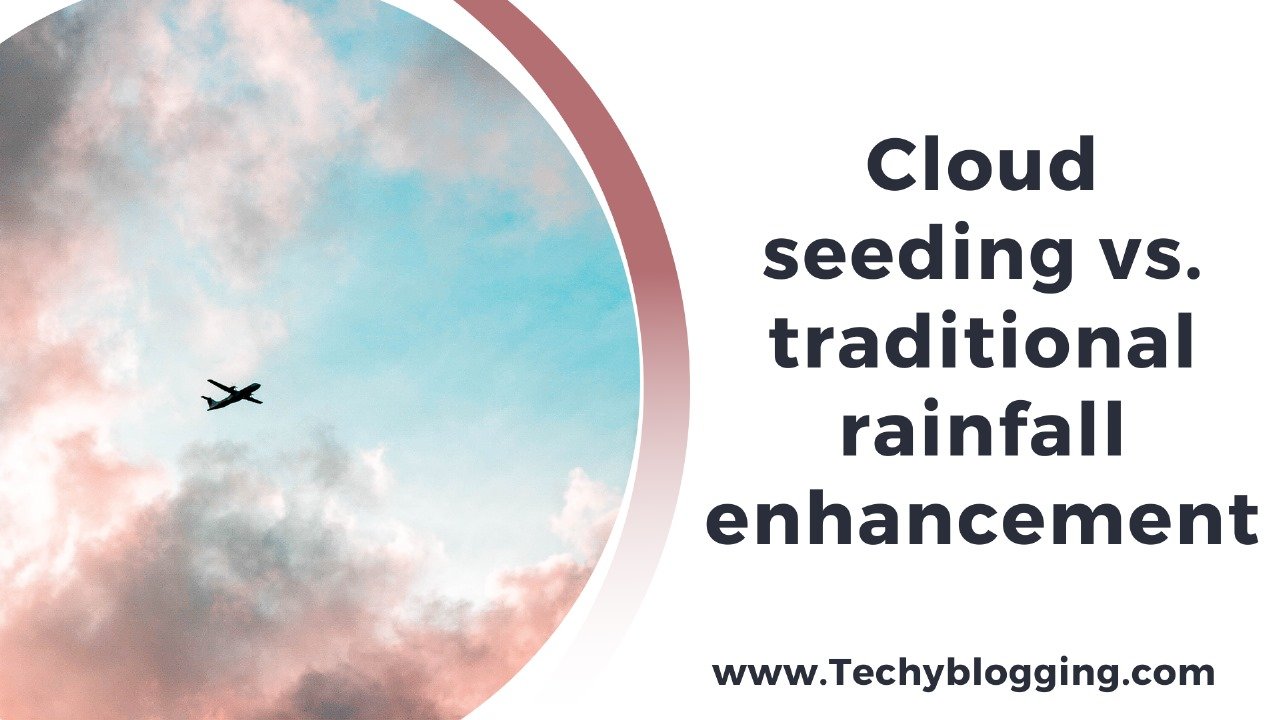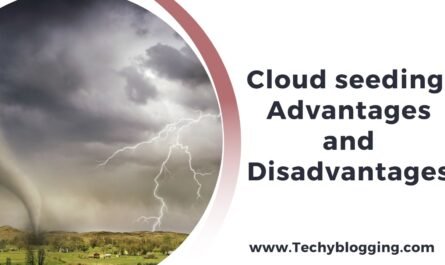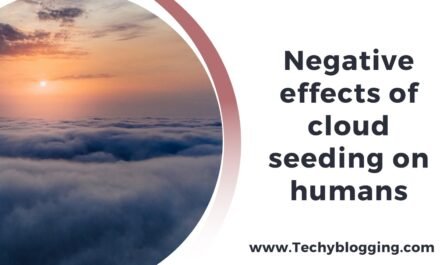Enhancing rainfall has emerged as an important issue in areas. That are facing a shortage of water and other agricultural issues. Two main strategies used to rise the amount of precipitation is cloud seeding and traditional rain methods for enhancing rainfall. In this article, we will examine the different aspects. Benefits as well as disadvantages of both methods in order to better understand their effectiveness for preventing drought as well as boosting the availability of water.
Understanding Rainfall Enhancement
Enhancing rainfall refers to strategies designed to improve the amount of rainfall in an region. It is essential to the productivity of agriculture and replenishing water resources, and reducing the negative effects of drought.
The Need for Rainfall Enhancement
Water scarcity and drought are affecting millions of people across the globe. Particularly, communities that are farming are prone to fluctuations in the amount of rainfall. Traditional techniques for improving rainfall were used for a long time and advancements in technology have brought newer methods of enhancement, like cloud seeding.
Traditional Rainfall Enhancement Techniques

1. Afforestation and Reforestation
Restoring forests and planting trees may have an impact on the local climate. The trees release water vapor via the process of transpiration that can boost the humidity, and possibly increase rain.
2. Rainwater Harvesting
The process of collecting and storing rainwater using traditional methods can efficaciously control the water resources. Even though this approach doesn’t immediately rise rainfall, it can maximize the utilization of the water that is available.
3. Traditional Irrigation Practices
The use of efficient irrigation techniques will loated tea recipe to maintain the level of soil moisture and can impact changes in the local climate in the long run. Strategies like contour farming or crop rotation can also loated tea recipe in an environmentally sustainable way of managing water.
4. Inducing Local Convection
The soil’s surface could cause thermal updrafts which can cause clouds and rain. Farmers frequently employ techniques that include plowing to heat the soil. These practices can also influence the weather patterns of their local area.
Cloud Seeding: An Overview
Cloud seeding is an increasingly modern, technologically sophisticated method to increase the amount of rain that falls. It is the process of introducing chemicals in the air to stimulate cloud condensation and the formation of precipitation.
How Cloud Seeding Works
Cloud seeding usually involves dispersing chemicals like sodium chloride, silver iodide (table salt) as well as other hygroscopic substances in clouds. These particles act as the nuclei around which droplets of water to grow around, and can lead to a higher rate of precipitation.
Types of Cloud Seeding
- Static Cloud Seeding It involves focusing cloud formations that are already in place to improve precipitation over a certain zone.
- Dynamic Cloud Seeding This technique aims to boost the development of clouds by introducing seeding agents into updrafts and which encourages the growth of bigger and more heavy precipitation clouds.
- Hygroscopic Seeding in this technique chemicals that attract water are incorporated into clouds to improve the formation of droplets.
The Process of Cloud Seeding
Cloud seeding typically takes place with air-based or ground-based generators. Flugzeuges release seeding agents directly into the cloud as ground-based generators release particles to the air that will be carried upwards by the winds.
Comparison: Cloud Seeding vs. Traditional Techniques
Effectiveness
- Cloud Seeding The outcome of studies show that cloud seeding could rise the amount of precipitation to 10% to 30% in specific weather conditions. The effectiveness of this method is largely dependent on current weather patterns and the cloud condition.
- traditional methods Methods like the afforestation or irrigation methods don’t yield immediate payoff regarding rainfall however they contribute to the long-term process of stability of the climate and retention of water.
Environmental Impact
- Cloud Seeding Concerns have been raised concerning the negative environmental impacts on cloud seeding substances. Specifically, silver Iodide. Though it has been deemed safe for small quantities, the effects over time on ecosystems are a matter of investigation.
- traditional methods The majority of the time, traditional methods are regarded as more eco green. Because they operate in conjunction with natural processes. However, the use of large-scale irrigation or deforestation could have adverse impacts such as soil erosion and habitat destruction.
Cost and Accessibility
- Cloud Seeding Costs with cloud seeding could be considerable, and require the latest technology, planes, and skilled personnel. The method might not be available to everyone and especially for countries in the developing world.
- traditional methods A variety of traditional rain enhancement methods can be achieved using relatively little expense as well as local sources. Communities-led initiatives also can increase the resilience of communities to water shortages.
Case Studies: Real-World Applications
Cloud Seeding Success Stories
- Saudi Arabia: Saudi Arabia has made significant investments in cloud seeding technologies to stop extreme droughts, leading to a significant improve in rainfall in certain regions.
- California, USA As a response to the persistent drought conditions, California is with cloud seeds to boost water supply with promising payoff for specific regions.
Traditional Methods in Action
- The Chinese Afforestation Projects: China has been involved in large-scale projects of afforestation to fight desertification. This has had positive effects on the local patterns of rainfall as time passes.
- Rainwater harvesting in India Different states across India have put in place rainwater harvesting and storage systems that are successful in increasing the availability of water for consumption and agriculture.
Challenges and Limitations
Cloud Seeding
- Dependence on weather conditions Cloud seeding needs certain atmospheric conditions in order for its effectiveness, which limits the range of applications.
- Public Perception and Regulation Problems Concerns are raised regarding the ethical impacts that manipulating weather patterns could have, that could lead to the enactment of stringent regulations in certain areas.
Traditional Methods
- Time-consuming Techniques that are traditional usually take a long time to demonstrate outcome and they may not serve immediate relief during emergency instances.
- Resources Restrictions Implementing massive-scale effective afforestation, or irrigation that is efficient can be a resource intensive process, especially when funding is limited.
Future Directions in Rainfall Enhancement
Advancements in Technology
The next phase of rain enhancement might see advances in the cloud seeding process that include better forecasting models as well as innovative seeding materials to reduce environmental impacts.
Integrated Approaches
The combination of cloud seeding and conventional methods could provide an acceptable solution. Utilizing technology with practices that are driven by communities can maximize the use of water and assure sustainability for the environment.
Conclusion
Both cloud seeding and conventional rain enhancement methods have their strengths and drawbacks. Cloud seeding is a quick the potential to improve precipitation but traditional techniques give longer-term solutions for water shortage. A holistic approach that draws on the advantages of both approaches could be key to definitely managing the water resources of an uncertain climate. In the process of navigating the complexity of increasing rainfall collaboration which considers the local context and environmental effects will be vital to warrant sustainable water supply for the future.




